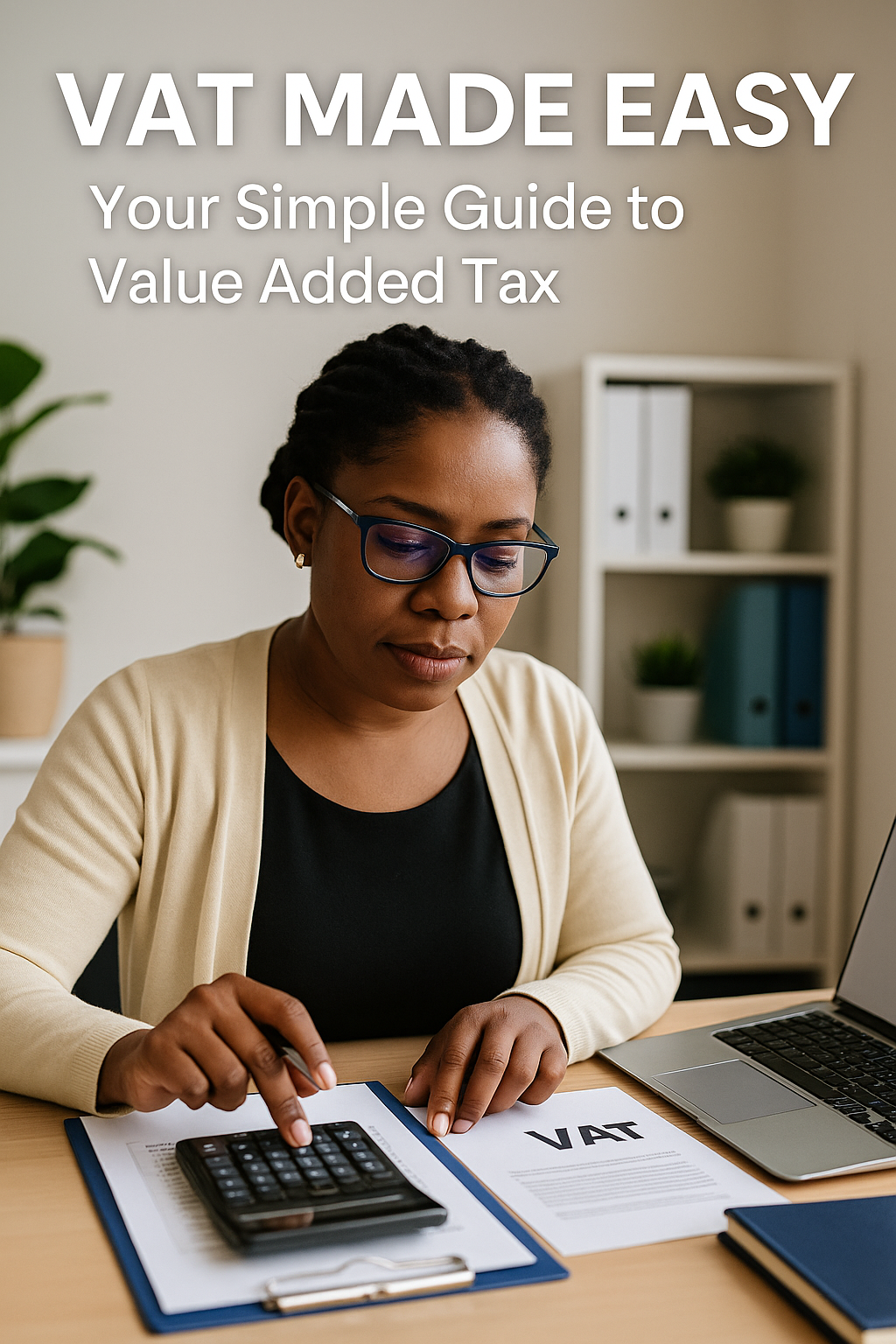VAT (Value Added Tax) might sound complicated and scary, but there’s no need to hide behind the sofa. We’re going to break it down into bite-sized pieces. Whether you’re just starting out or looking to brush up on your tax knowledge, this guide will help you navigate the world of VAT with ease and confidence.
So, grab a cup of coffee, sit back and let’s dive into the fun world of VAT.
Prefer to watch? Here’s a quick video that makes VAT simple and explains what you need to know in plain English
What is VAT?
VAT is a consumption tax placed on Goods and Services and charged at each stage of the supply chain, from production to sale. This means that, every time a product is sold, VAT is added to the price, and businesses collect this tax on behalf of the Government.
For example, if you buy a coffee that costs £3.60, with a VAT rate of 20%, the coffee’s actual price is £3, but the coffee shop charges you the extra 60p as the VAT that the shop will pass on to HMRC.
Who Needs to Register for VAT?
If your business’s taxable turnover exceeds the VAT threshold (currently £90,000), you must register for VAT. Even if you’re below this threshold, though, you can voluntarily register.
Now, you may be asking why you would want to do that. It’s because being VAT registered allows you to reclaim VAT on your business purchases.
This means you need to keep an eye on your turnover. If you’re approaching the threshold, it’s time to consider registering.
Types of VAT Rates
VAT comes in three flavours, and knowing the difference is key to managing your business finances:
- Standard Rate (20%) — This is the most common rate and applies to most goods and services.
- Reduced Rate (5%) — This applies to certain goods and services, like home energy and children’s car seats.
- Zero Rate (0% — Some items, such as food and children’s clothing, are zero-rated, meaning you don’t charge VAT. However, you can still reclaim VAT on related expenses.
Even though zero-rated items don’t involve charging any VAT, your business will still need to keep records of these sales.
How to Charge VAT
Once you’ve registered, you must charge VAT on your Sales. This means issuing VAT invoices to your customers, which must include:
- Your Business name and address
- Your VAT registration number
- The date of the invoice
- A description of the goods or services provided
- The total amount charged, including VAT
For example, if you sell a product for £100, you’d charge your customer £120 (including £20 VAT).
Filing VAT Returns
If you’re registered, you’ll need to submit VAT returns, usually quarterly or annually, detailing the VAT you’ve charged and paid. This is where you can reclaim any VAT on business expenses. The process of filing is:
- Gather your Sales and Purchases records.
- Calculate the total VAT you’ve charged (Output Tax).
- Calculate the total VAT you’ve paid on Purchases (Input Tax).
- Submit your VAT return to HMRC.
A valuable tip is to keep your records organised throughout the year, which will make filing much easier.
Common VAT Mistakes to Avoid
VAT can be tricky, and there are a number of common pitfalls that you need to watch out for:
- Failing to register on time — If your Turnover exceeds the threshold, register promptly to avoid penalties.
- Not keeping proper records — Good record-keeping is essential for accurate VAT returns.
- Misunderstanding what can be claimed back — Not all expenses are eligible for VAT reclaim, so check the rules.
Tips and Best Practices
- Keep Accurate Records — Maintain detailed records of all Sales and Purchases in order to simplify your VAT Returns.
- Use Accounting Software — Many programs can help you manage VAT easily, making it a breeze to track your transactions.
- Stay Updated — VAT rules can change, so keep an eye on updates from HMRC to ensure compliance.
Managing Your VAT With Confidence
Understanding VAT needn’t be difficult. With the right knowledge and tools, you can manage your VAT obligations with confidence, so embrace VAT and let it work for your business.
Related Reading: If you’re Self-employed, understanding which expenses you can claim is just as important as knowing when to charge VAT. Read our simple guide to allowable business expenses.
If you have any questions or need further assistance, don’t hesitate to get in touch with me here at Grace Certified Accountants. Happy VAT managing!
